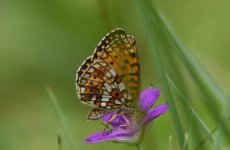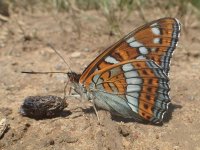Andy Adcock
Worst person on Birdforum

I just can't figure this at all, seems to show features that fit both.
Some of the large cells are a perfect fit for PB rather than SPB? The large whitsh cell that sits second from bottom in the vertical row in the hind wing is spot on shape wise for PB but not SPB, at least in Collins. They are however not mentioned as being diagnostic.
I simply can't differentiate the difference in the chevron surround, PB being blunt and SPB well defined (Collins) they all look the same to me and the colour of the post discal spots is hard to tell in this light, help!
SPB is the common one here, PB hasn't been seen here yet at my patch.
Thanks, Andy
Some of the large cells are a perfect fit for PB rather than SPB? The large whitsh cell that sits second from bottom in the vertical row in the hind wing is spot on shape wise for PB but not SPB, at least in Collins. They are however not mentioned as being diagnostic.
I simply can't differentiate the difference in the chevron surround, PB being blunt and SPB well defined (Collins) they all look the same to me and the colour of the post discal spots is hard to tell in this light, help!
SPB is the common one here, PB hasn't been seen here yet at my patch.
Thanks, Andy
Attachments
Last edited:







